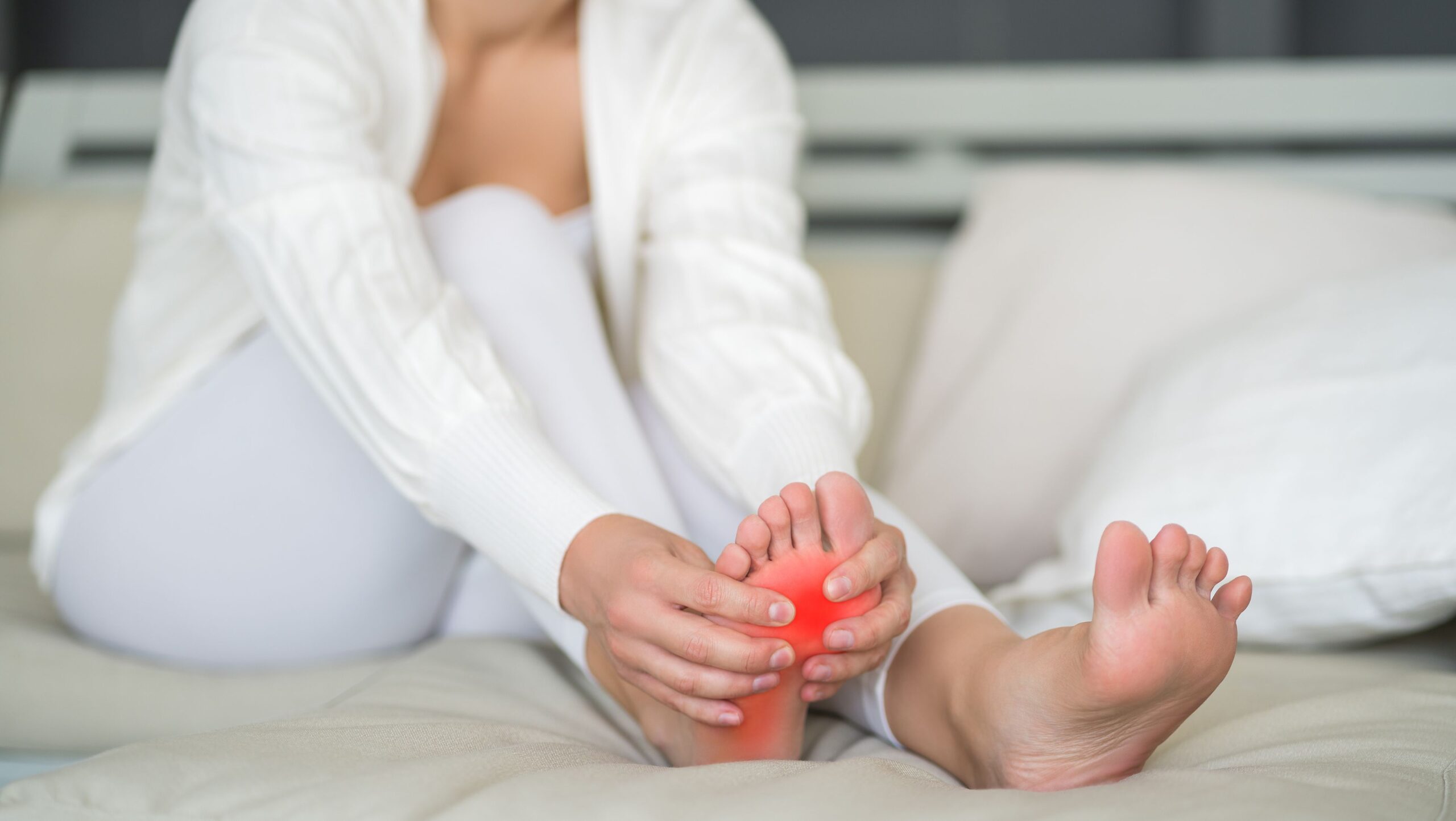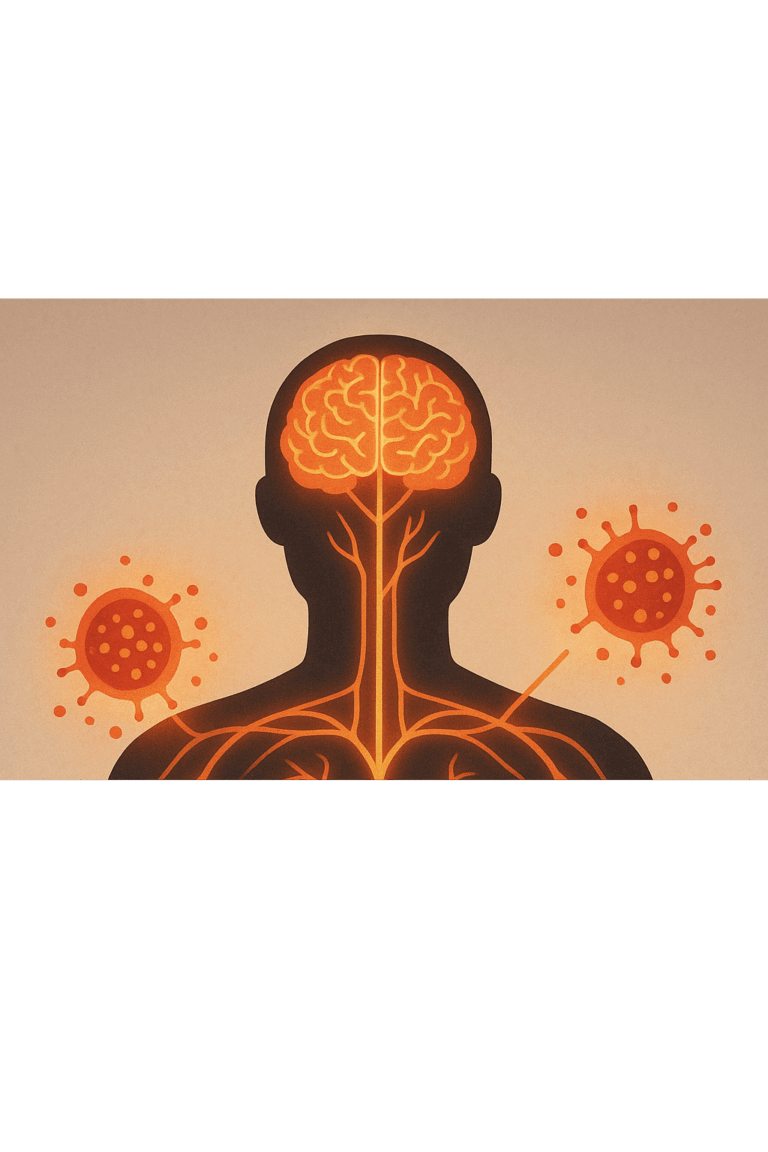- POTS and Exercise: The First Step Everyone Misses - 27 June 2025
- The Missing Link Between Breathlessness, Fatigue, and Chronic Pain: Understanding CO₂ Tolerance - 19 June 2025
- What is Mast Cell Activation Syndrome? - 12 May 2025
Dive deep into the annals of medical literature and you’ll stumble upon a condition that’s been both a conundrum and a source of heartache for many: Complex Regional Pain Syndrome (CRPS). At first glance, the sheer intensity of the symptoms associated with CRPS might seem exaggerated. But for those ensnared in its grip, the pain is as real as it gets.
This blog post is set to unpack the mysteries of CRPS from a wealth of research that’s been both enlightening and, at times, contentious.
So, if you’re ready for a deep dive into the world of CRPS, where myths are debunked, mechanisms are laid bare, and management strategies are discussed, then you’re in the right place. And trust me, by the end of this, you’ll have a newfound appreciation for the complexities of this condition and the challenges faced by those living with it.
This article covers:
ToggleWhat is CRPS?
Complex Regional Pain Syndrome, or CRPS for short, isn’t just a mouthful of medical jargon: it’s a condition that has perplexed and challenged much of the medical community for years on end. If you’ve been around the block, you might recognize its older moniker, Reflex Sympathetic Dystrophy (RSD). Names aside, CRPS is a painful disorder that often emerges as a disproportionate consequence of trauma.
Now, let’s get something straight right off the bat. While CRPS typically develops in the limbs, it’s not just about the pain. It’s a symphony (or perhaps a cacophony) of symptoms that can include spontaneous pain, allodynia (where even the lightest touch can be painful), and mechanical hyperalgesia. But the list doesn’t end there. CRPS can also manifest through abnormal regulation of blood flow, sweating, edema in the skin and subcutaneous tissues, movement disorders, and even trophic changes affecting the skin and underlying tissues.
But here’s where things get even more intricate.
While CRPS can often follow an injury, it’s not the injury itself but the aftermath that’s the real culprit. The most common cause of CRPS? Immobilization after some form of physical trauma. We’re talking fractures, surgeries, infections, nerve injuries, sprains – the works. It’s a bit like your body’s alarm system going haywire after a minor disturbance, sounding the sirens long after the initial threat has passed.
If you’re thinking this is a one-size-fits-all condition, think again. There are two types of CRPS:
- CRPS Type I (previously known as RSD): This type occurs after an illness or injury that didn’t directly damage the nerves in the affected limb. It’s puzzling, isn’t it? Imagine suffering from a condition where the root cause isn’t directly linked to the symptom. Most cases of CRPS are of this type.
- CRPS Type II: This was previously known as causalgia. Unlike Type I, this type follows a nerve injury. So, there’s a direct correlation between the injury and the onset of CRPS symptoms.
Both types have subtle differences, but their primary similarity is the intense, unimaginable pain they inflict. It’s like the body’s alarm system going haywire, sounding off when there’s no immediate threat. The pain usually follows some form of initial injury, but not always. And here’s a fun (or not-so-fun) fact: the most common cause of CRPS is immobilization after some form of physical trauma. This could be due to fractures, surgeries, infections, nerve injuries, or even sprains.
Causes and Onset of CRPS
Diving into the causes and onset of Complex Regional Pain Syndrome (CRPS) is akin to peeling back the layers of a complex, intricate puzzle. The disorder, often emerging as a disproportionate consequence of trauma, predominantly targets the limbs. But what’s truly fascinating, and at times perplexing, is the sequence of events that lead to its manifestation.
CRPS, in its essence, is a painful disorder that doesn’t merely arise from a single event. Instead, it’s a culmination of factors, both physical and neurological, that intertwine in a dance of cause and effect. The most common precursor to CRPS? Physical trauma. Picture this: a fracture, a surgical procedure, an infection, a nerve injury, or even a sprain. These events in themselves are distressing, but it’s what often follows that sets the stage for CRPS. Immobilization. Whether it’s through a cast, a brace, a splint, or any form of restrictive device, this period of immobilization is the silent actor in the play of CRPS.
Now, let’s delve a bit deeper. When a limb is immobilized, a series of changes begin to unfold. Firstly, the sensitivity or reactivity of the nerves in the affected area undergoes a transformation. It’s as if they’re on high alert, becoming more responsive to stimuli. Concurrently, the brain’s processing ability for that specific body region starts to alter. This dual phenomenon is termed as peripheral sensitization (changes in the local nerves) and central sensitization (changes in the brain’s sensory processing).
But why does this happen? Think of it as the body’s defence mechanism going into overdrive. It’s trying to protect the injured area, ramping up its defensive strategies. The nerves in the affected region begin to change their physiology, making you more adept at detecting various sensory information. It’s like having a heightened security system, always on the lookout for potential threats.
However, it’s crucial to note that while immobilization after trauma is a significant factor, it’s not the sole cause. The intricate web of CRPS is influenced by various factors, and understanding the initial cause provides invaluable insight into the condition. It’s like retracing the steps of a mystery, where each clue provides a deeper understanding of the bigger picture.
Symptoms of CRPS
If you’ve ever grazed your knee or accidentally touched a hot pan, you know what pain feels like. But for those with Complex Regional Pain Syndrome (CRPS), pain takes on a whole new dimension. It’s not just a fleeting sensation; it’s a relentless, all-consuming force that can turn even the simplest tasks into agonizing ordeals.
Now, if you were to skim through medical journals or even just do a quick Google search, you’d find that CRPS is often described with clinical detachment. But let’s delve deeper, beyond the sterile definitions, and truly understand the profound impact of this condition’s symptoms.
1. Intense, Unimaginable Pain: The hallmark of CRPS is its severe pain, often described by patients as being beyond anything they’ve ever experienced. Imagine the worst pain you’ve ever felt, then amplify it. That’s the daily reality for many with CRPS.
2. Hyperalgesia: This isn’t just a fancy medical term. Hyperalgesia refers to an increased sensitivity to pain. In the context of CRPS, it means that stimuli that are normally harmless, like a gentle touch or a slight change in temperature, can cause excruciating pain.
3. Allodynia: If you thought hyperalgesia sounded bad, meet its sinister cousin, Allodynia. This is when pain is experienced from stimuli that shouldn’t cause pain at all. Imagine feeling pain from the soft touch of a bedsheet or the gentle caress of a loved one. That’s allodynia in action.
4. Abnormal Blood Flow and Sweating: CRPS isn’t just about pain. It also brings with it a host of other symptoms, including abnormal regulation of blood flow and sweating. This can result in temperature changes in the affected limb, making it feel unusually warm or cold.
5. Edema: Swelling, or edema, is another common symptom. The affected area may appear puffy and feel tender to the touch.
6. Movement Disorders: CRPS can also impact movement. This can manifest as tremors, spasms, or even dystonia, a condition where muscles contract involuntarily, causing twisting and repetitive movements.
7. Trophic Changes: The skin, nails, and hair in the affected area can undergo changes. This might include alterations in hair growth patterns, changes in nail texture, or skin discolouration.
8. The Tendency to Spread: One of the most unsettling aspects of CRPS is its ability to spread. What might start in a single limb can, over time, affect other parts of the body.
Debunking Myths about CRPS
If you’ve ever taken a deep dive into the vast ocean of medical literature, especially on conditions that aren’t as mainstream, you’ll find a plethora of myths, misconceptions, and sometimes, downright misinformation. CRPS, or Complex Regional Pain Syndrome, is no stranger to this phenomenon. Today, we’re going to sift through the chaff and get to the grain of truth about CRPS.
Now, before we delve into the nitty-gritty, let’s address the elephant in the room: the pervasive myth that CRPS is a mental condition, that it’s all “in the head” or even worse, that it’s “made up.” This belief, unfortunately, has cast a shadow over the genuine suffering of countless individuals. One reason this stigma persists is that often, diagnostic testing cannot fully explain the symptoms. Even if there was an initial injury, the degree of symptoms can far outweigh the extent of the injury. The pain lingers and intensifies, even when the initial injury has healed. This disparity between the visible injury and the intense pain can lead some to erroneously conclude that the condition is psychological.
But let’s clear the air here. Just because the pain of CRPS might not always align with what we see on an X-ray or MRI doesn’t mean it’s not real. It’s essential to understand that pain is a complex interplay of various factors, including physical, psychological, and environmental. And while the mind is powerful, suggesting that CRPS is merely a figment of one’s imagination is both scientifically inaccurate and deeply dismissive.
Moreover, the belief that CRPS is “all in the head” can be detrimental to patients. It can delay appropriate treatment, exacerbate feelings of isolation, and even intensify the pain. It’s a bit like telling someone with a broken leg to just “walk it off.” It’s not only unhelpful but can cause further harm.
Neuroscience and Neurobiology of CRPS
Just like those questionable studies on grounding we’ve previously discussed in other blogs, it’s essential to understand the science to separate fact from fiction. If you’ve been following along, you’ll remember that in the previous sections, we touched upon the symptoms and myths surrounding this condition. But what’s happening beneath the surface? What’s causing these symptoms?
Several studies have highlighted alterations in the central sensorimotor processing in CRPS patients. These changes in the central nervous system play a pivotal role in our understanding of CRPS pathophysiology and its treatment. The central and peripheral mechanisms responsible for vascular abnormalities and pain in CRPS are particularly intriguing. But before your eyes glaze over, let’s break this down.
Imagine you have one of those high-tech security systems at home. It’s designed to detect any potential threats and alert you. Now, let’s say this system starts malfunctioning. Instead of alerting you only when there’s a genuine threat, it starts sounding the alarm at the slightest movement, even if it’s just a leaf blowing in the wind. This is, in essence, what’s happening with CRPS. The body’s natural defence mechanisms, designed to detect and respond to pain, become hyper-reactive. There’s a change in the peripheral nerves in the affected area, known as peripheral sensitization, and a change in the brain’s processing of sensory information, termed central sensitization.
Now, if you’re thinking, “That sounds complex,” you’re not wrong. But here’s where it gets even more intricate. When we experience pain, brain regions responsible for modulating pain on both sides of the brain activate. So, it’s not just the side experiencing pain that’s affected. This widespread hyper-excitability of brain regions has been observed in those with chronic pain, which may contribute to the spread of CRPS.
But why does this matter? Well, understanding the neurobiology behind CRPS is crucial for two reasons. Firstly, it helps debunk the myths surrounding the condition. It’s not “all in the head” or a made-up ailment. There’s genuine, scientifically backed evidence to show that CRPS is a real, physiological condition. And secondly, understanding the science paves the way for effective treatments.
In the world of medical research, it’s easy to get lost in the sea of studies, some reputable, others not so much. Just like those pay-to-publish journals we discussed earlier, it’s essential to approach the science of CRPS with a discerning eye. But one thing’s for sure: the more we understand the neurobiology of CRPS, the closer we get to finding effective treatments and improving the lives of those affected by this condition.
Treatment Approaches and Strategies for CRPS
CRPS, with its intricate web of symptoms and challenges, necessitates a multi-faceted treatment approach. Here’s a deeper dive into the strategies that have shown promise:
Electrical Stimulation: This isn’t your average spa treatment. Electrical stimulation, specifically transcutaneous electrical nerve stimulation (TENS), involves sending small electrical currents through electrodes placed on the skin. The idea? To disrupt the pain signals being sent to the brain. While it might sound daunting, many patients report significant relief, especially when combined with other therapies.
Avoiding the “Boom and Bust” Cycle: Living with CRPS often feels like walking on a tightrope. Push too hard, and you might face a flare-up; do too little, and the muscles weaken. The key is to find a balance. Regular, moderate activity, interspersed with rest periods, can help maintain muscle strength without triggering a pain episode. It’s about respecting your body’s limits while gently pushing its boundaries.
Physical Therapy: It’s not just about stretching and strengthening. Physical therapy for CRPS is a holistic approach, encompassing manual therapy, graded motor imagery, and even mirror therapy. The goal? To retrain the brain’s perception of movement and pain, helping patients reclaim their mobility without fear.
Medication: The pharmacological approach to CRPS is as varied as its symptoms. Non-steroidal anti-inflammatory drugs (NSAIDs) can help manage inflammation, while anticonvulsants and antidepressants have shown promise in nerve pain relief. Opioids, though effective, are used judiciously due to their potential for addiction.
Psychotherapy: The mind-body connection in CRPS is undeniable. Chronic pain can lead to anxiety, depression, and even post-traumatic stress. Cognitive-behavioural therapy, mindfulness, and relaxation techniques can not only help patients cope with the emotional toll of CRPS but also potentially reduce the perception of pain.
CO2 Pooling for Vasodilation: One of the lesser-known but intriguing strategies involves the use of CO2 pooling. By increasing Co2 tolerance and carbon dioxide levels in the blood, vasodilation (widening of blood vessels) is promoted. This enhanced blood flow can help alleviate some of the ischemic pain associated with CRPS and improve tissue health.
Navigating the world of CRPS treatments is akin to piecing together a puzzle. Each piece, from electrical stimulation to CO2 pooling, plays a crucial role in the bigger picture of pain management and recovery. The journey might be long, filled with trials and errors, but with persistence, the right combination of treatments can pave the way to a brighter, pain-free future. Remember, every individual’s journey with CRPS is unique: what’s paramount is staying informed, seeking expert guidance, and above all, holding onto hope.
Enjoyed Our Blog? Why Stop Here?
If you’ve found value in our posts, imagine the impact of a structured, science-backed course tailored specifically for fibromyalgia and its unique challenges. The Full Body Fibro Course is your ultimate starting point for understanding your body, improving mobility, and managing symptoms effectively.





